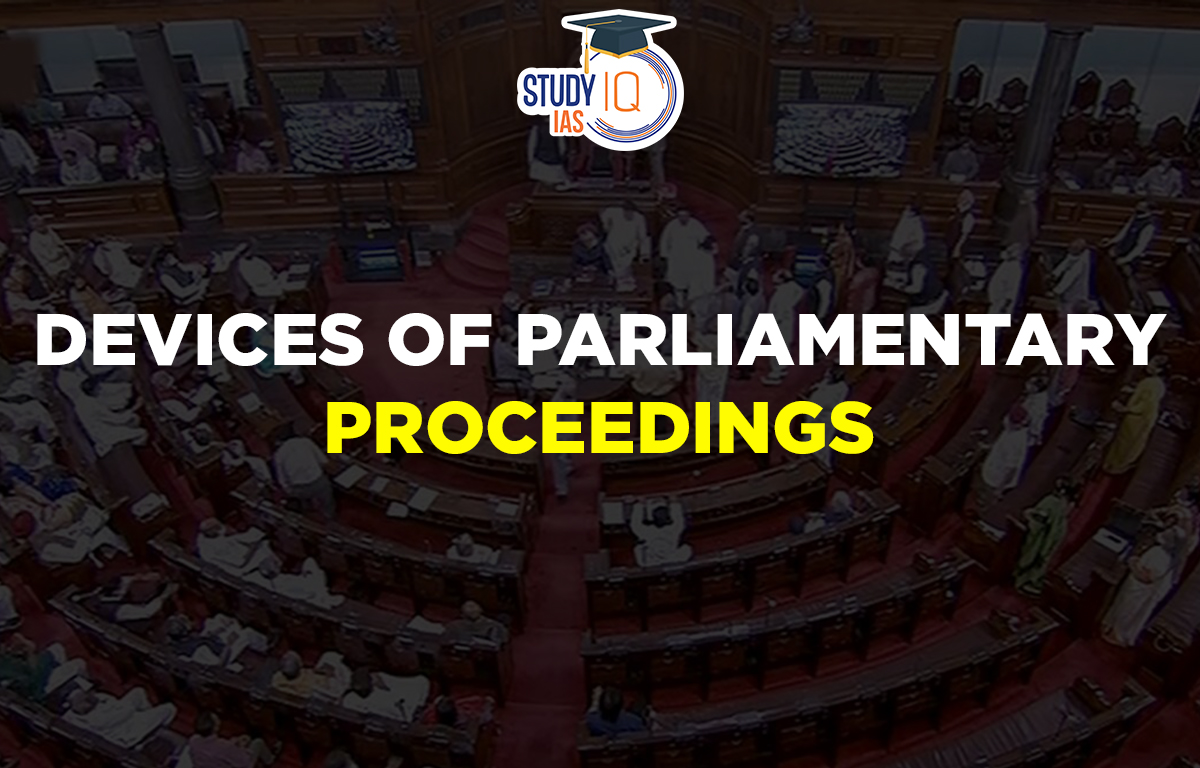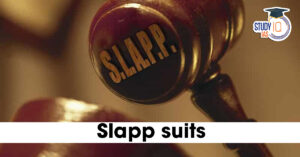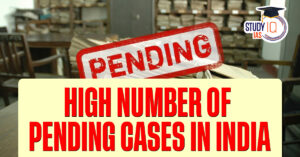Table of Contents
Devices of Parliamentary Proceedings
Parliamentary devices are built on the several forms of motions that are allowed. The usage of devices during parliamentary proceedings makes sure that all parliamentarians follow the houses’ respective procedural procedures. By adopting or rejecting motions presented by ministries or private members, both houses of the Parliament can express their views or opinions on a range of matters.
Adjournment motions, call-attention motions, censure motions, motions of thanks, no-confidence motions, and others are among the many different sorts of motions that can be made in Parliament. This article explains the Devices of Parliamentary Proceedings, their types and their Importance are important for UPSC Syllabus. The UPSC Mock Test can help candidates prepare for the exam with more precision.
Devices of Parliamentary Proceedings Meaning
A key component of the tools used in legislative proceedings is the motions. Motions can be classified as substantial, substitute, or subsidiary. Motions are used in parliament by members to bring up and address topics of public concern. These procedures enable members to successfully communicate their concerns in the respective Houses and assist the Parliament in adapting to the changing requirements of the public.
Also Read: Public Accounts Committee
Devices of Parliamentary Proceedings Explanations
There aren’t many regulations governing how motions in Parliament are announced. Numerous elements influence whether the motion in the house is acceptable. The Speaker is free to make a variety of inquiries about the motion. The Devices of Parliamentary Proceedings or different forms of motions in parliament and their descriptions are explained here:
Question Hour
This is scheduled for the opening hour of each parliamentary session. The ministers typically respond to the questions that the members pose during this period. There are three different types of questions: starred, unstarred, and short notice.
Additional questions may be asked after a question with a star (designated by an asterisk) since it needs an oral response. On the other hand, a question that is not highlighted calls for a written response; hence, more inquiries are not permitted. A question with a short notice period is one with a notice period of less than ten days. It is addressed verbally.
Closure Motion
It is a member-introduced motion to adjourn the House’s deliberations on a subject. The debate is immediately interrupted and put to a vote if the motion is approved by the House. There are four different categories for closure movements:
- Simple Closure: When a member moves that the “subject having been properly addressed” be put to a vote, this type of closure takes place.
- Closure by Compartments: In this scenario, sections of a lengthy resolution or bill’s provisions are divided before the discussion begins. The section is placed to vote once the argument takes up the entire section.
- Kangaroo Closure: In this structure, just the most crucial sentences are debated and decided, with the remaining ones being skipped and approved as passed.
- Guillotine Closure: The act of voting on a bill or resolution with its unsolved issues present because of a lack of time.
No-Confidence Motion
A No-Confidence Motion is a parliamentary motion used to test the support of the governing party or coalition in the legislature. The motion is usually proposed by the opposition party or parties, and if it is successful, it can lead to the removal of the current government and the formation of a new one.
In a No Confidence Motion, Members of Parliament (MPs) are asked to vote on whether they have confidence in the current government. If the motion receives a majority of votes against the government, then the government is said to have lost the confidence of the House. This can lead to the resignation of the Prime Minister and the dissolution of the government, or it can lead to a new government being formed if there is another party or coalition with sufficient support.
Also Read: Chairman of Rajya Sabha
Privilege Motion
A Privilege Motion is a parliamentary procedure used to bring to the notice of the House or the Speaker, a breach of privilege or contempt of the House by a member or anyone else. The term “privilege” in this context refers to the special rights and immunities that Members of Parliament (MPs) and the House as an institution enjoy, in order to carry out their constitutional duties without any obstruction, intimidation or interference.
A breach of privilege can occur in several ways such as an insult or disrespectful behaviour towards the House or its members, misleading the House, unauthorized publication of a speech or proceedings of the House, and so on. Any member can move a privilege motion with a written notice addressed to the Speaker of the House, explaining the details of the alleged breach of privilege or contempt.
Motion of Thanks
The president speaks at both the first session following each general election and the first session of each fiscal year. The president explains the government’s plans and goals for the current year and the one after that in this speech. In both Houses of Parliament, a motion known as the “Motion of Thanks” is used to discuss the president’s speech, which is equivalent to the “speech from the Throne” in Britain. The motion is put to a vote at the conclusion of the discussion.
This motion must be passed in the House. Otherwise, the government will be overthrown. The members of Parliament have the opportunity to raise discussions and debates during the president’s inauguration speech to examine and critique the government and administration for its flaws and shortcomings.
Calling Attention Motion
A member of the Parliament introduces it in order to draw a minister’s attention to an issue of urgent public concern and to request an authoritative statement from him on it. It was invented in India, along with zero hours, and has been a part of the parliamentary procedure since 1954. Contrary to zero hours, the Rules of Procedure do mention it.
No-Day-Yet-Named-Motion
The Speaker has acknowledged the motion, but no time has been set for its consideration. The Speaker allots a day or days, or a portion of a day, for the discussion of such a motion after assessing the state of business in the House, consulting with the leader of the House, or upon the proposal of the Business Advisory Committee.
Censure Motion
The justifications for its Lok Sabha acceptance had to be stated. A minister, a group of ministers, or the entire council of ministers may be the target of such a motion. The motion is made to Censure the Council of Ministers for a number of particular decisions and actions. In the event that it is approved by the Lok Sabha, the council of ministers will not be required to quit.
Point of Order
When the House’s proceedings deviate from the established procedures, a Member may raise a point of order. A point of order must raise a concern that is within the Speaker’s purview and must deal with the interpretation or application of the House Rules of Procedure or other constitutional provisions that govern the House’s operations. It is typically brought up by a member of the opposition to influence politics. It is a remarkable device since it pauses the House’s business. No discussion on a point of order is permitted.
Half-an-Hour Discussion
It is intended for debating an issue of substantial public importance that has generated much discussion and whose resolution necessitates factual clarification. Three days each week may be set aside by the Speaker for these talks. The House won’t be taking any official action or voting today.
Adjournment Motion
A member may suggest that the business of the house be deferred so that it can be discussed if there is an urgent matter of public significance. This motion can only be made with the Speaker’s approval. Typically, these motions are considered at about 4 p.m. in the afternoon.
Short Discussion
It is also referred to as a “two-hour discussion” because a debate of this nature shouldn’t last longer than two hours. On a topic of urgent public concern, the members of the Parliament may bring up such talks. Two days each week may be set aside by the Speaker for these debates. The house is not voting or considering a formal motion. Since 1953, this device has been in use.
Informal Devices of Parliamentary Proceedings
The informal timekeeping system used in parliamentary deliberations is zero hours. Check out the remaining details pertaining to the informal device of parliamentary proceedings after the question and answer period.
- Begins at noon, right after Question Hour.
- Each participant has three minutes to present a problem.
- Before 10 AM, they must notify the presiding officer.
Devices of Parliamentary Proceedings Rules
A set of guidelines and norms govern the motions in the Indian parliament. The Rules of Procedure and Conduct of Business in the Lok Sabha and Rajya Sabha contain an extensive collection of these rules and regulations. The notice of motion, priority, and discussion on a motion in parliament are a few of these regulations.
In addition, the regulations detail how to modify any previously passed motions. The amendment, however, must be pertinent to the motion’s topic. Additionally, a member who has provided notice of a motion in the legislature may withdraw it with the Speaker’s or Chairman’s permission before it is moved.
Devices in Parliamentary Proceedings Importance
The parliamentary system in India has produced numerous intricate processes and mechanisms. These support members in bringing up various issues in the House and the efficient and orderly conduct of business.
Even though it was initially based on the British model, the Indian parliamentary process differs significantly from that used in the British House of Commons. Even though there are many similarities between the tvi/o systems, Indian legislative practises have developed on their own, diverged significantly in many areas, and charted their own course in creating a variety of procedures to suit our demands over time.
Devices in Parliamentary Proceedings UPSC
One of the most crucial subjects for the UPSC IAS test is the Devices of Parliamentary Procedure. The use of legislative tools is essential to the Parliament’s success. By providing members with a variety of instruments to raise issues, they not only help the House perform business in an orderly and quick manner, but they also give the democratic system more stability and predictability.
Parliamentary procedures must constantly change to meet the ever-changing demands of the times because they are not static. Students can read all the details related to UPSC by visiting the official website of StudyIQ UPSC Online Coaching.


 SLAPP Suits: Meaning, Examples, Impact o...
SLAPP Suits: Meaning, Examples, Impact o...
 Finance Commission of India, Articles an...
Finance Commission of India, Articles an...
 High Number of Pending Cases in Supreme ...
High Number of Pending Cases in Supreme ...

























